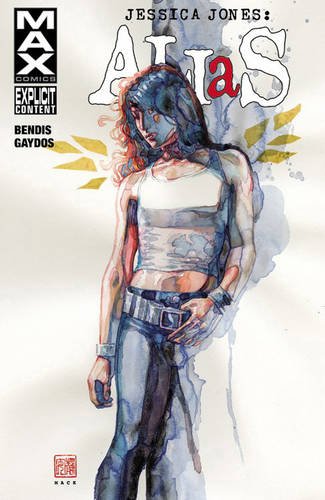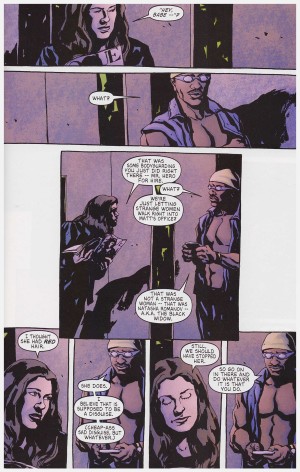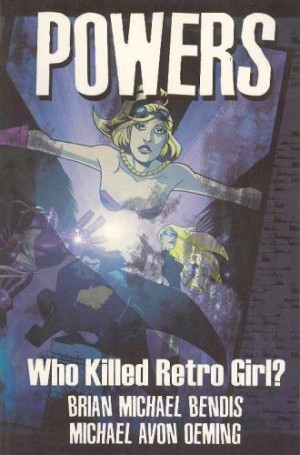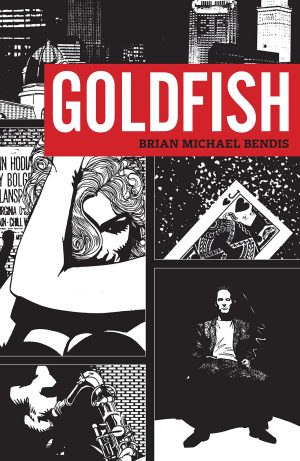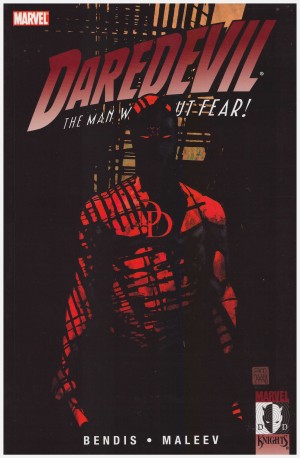Review by Frank Plowright
Jessica Jones travels from her familiar city environment to the small town of Lago in New York state where a 16 year old girl has gone missing. Writer Brian Michael Bendis carefully cultivates an entrenched collective mentality that some could construe as partial pastiche, with a selection of citizens seemingly dense beyond the call of duty in their reactions. The victim’s Aunt, for one, responsible for a front page story in the local newspaper announcing Jessica’s arrival, complete with photograph, so immediately impairing her chances of discovering anything. Bendis then layers the community with characters steeped in bigotry, which has a relevance to the investigation.
Rebecca’s collage scrapbooks, illustrated by David Mack, offer insight into someone who’s seemingly a square peg, and Bendis is particularly on the button with his presentation of the back-biting hell of rumour-fueled high school conformity.
Bendis pulls off a difficult trick in Come Home, or Volume 2 if buying the most recent edition, of the procedural investigation formed from a parade of mundane interactions remaining interesting. What makes it work is that he’s already created a compelling character in Jessica, and her car crash of a life forms the backdrop to her methodology. And even better is that much of what seems patronising (at best) about the initial presentation of Lago is whipped away. Further undermining of judgemental behaviour occurs in the single chapter epilogue, with Jessica back in New York.
With the exception of Mack’s contributions and a two page view of Jessica as a superhero pencilled by Mark Bagley, Michael Gaydos draws everything here in his gloomy style. He focuses on faces, primarily as reaction indicators, and plays to Bendis’ strengths in creating conversations. Elsewhere repetition of the same image might be considered idleness, but it has a validity here. People don’t constantly change their expression when listening, and the listening is important for the context of conversation based material.
With the entire Alias series being so good, prospective buyers who can afford it are directed to the oversize hardback Omnibus. Not only is it a luxury format collecting all four paperback volumes of Alias, but it rectifies a production problem particularly affecting this book. Gaydos often tells the story via horizontal tiers across a double page spread, and while this worked fine in the original comics, in the paperbacks text and illustration are sometimes sunk into the binding.
Jessica’s story continues in The Underneath, or plain Volume 3 in the 2015 edition.
